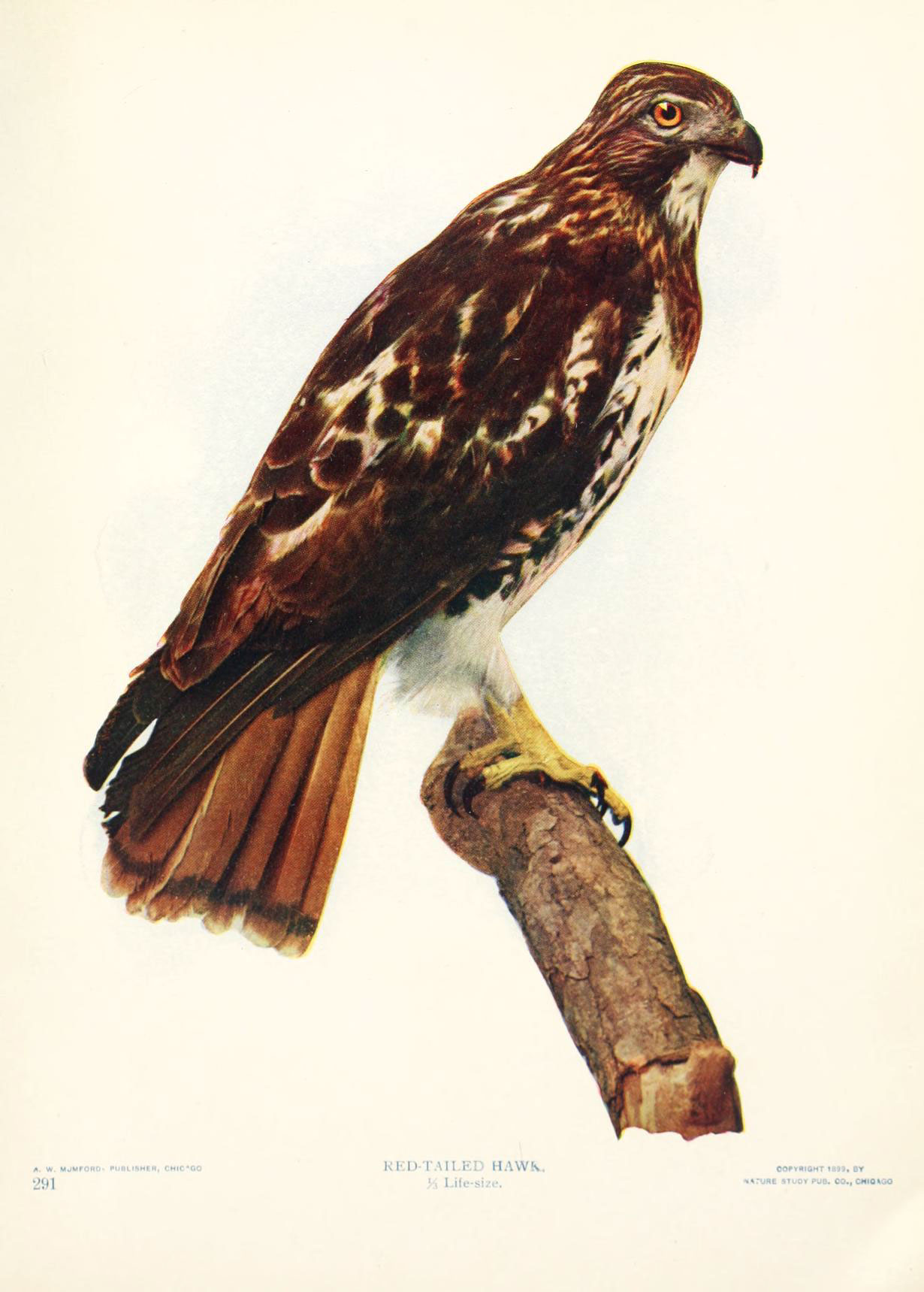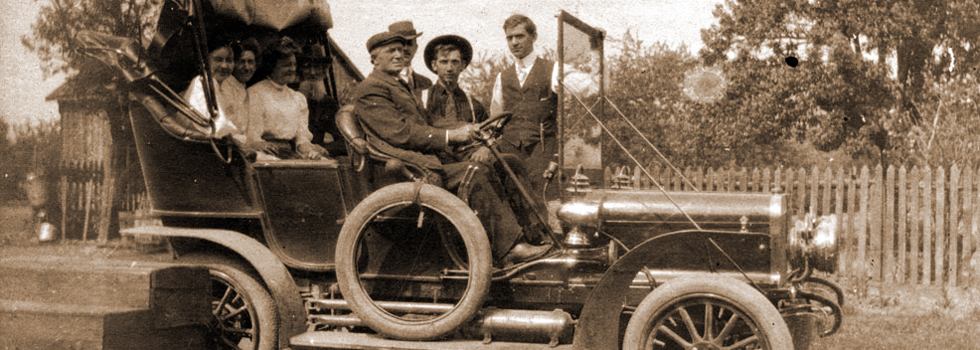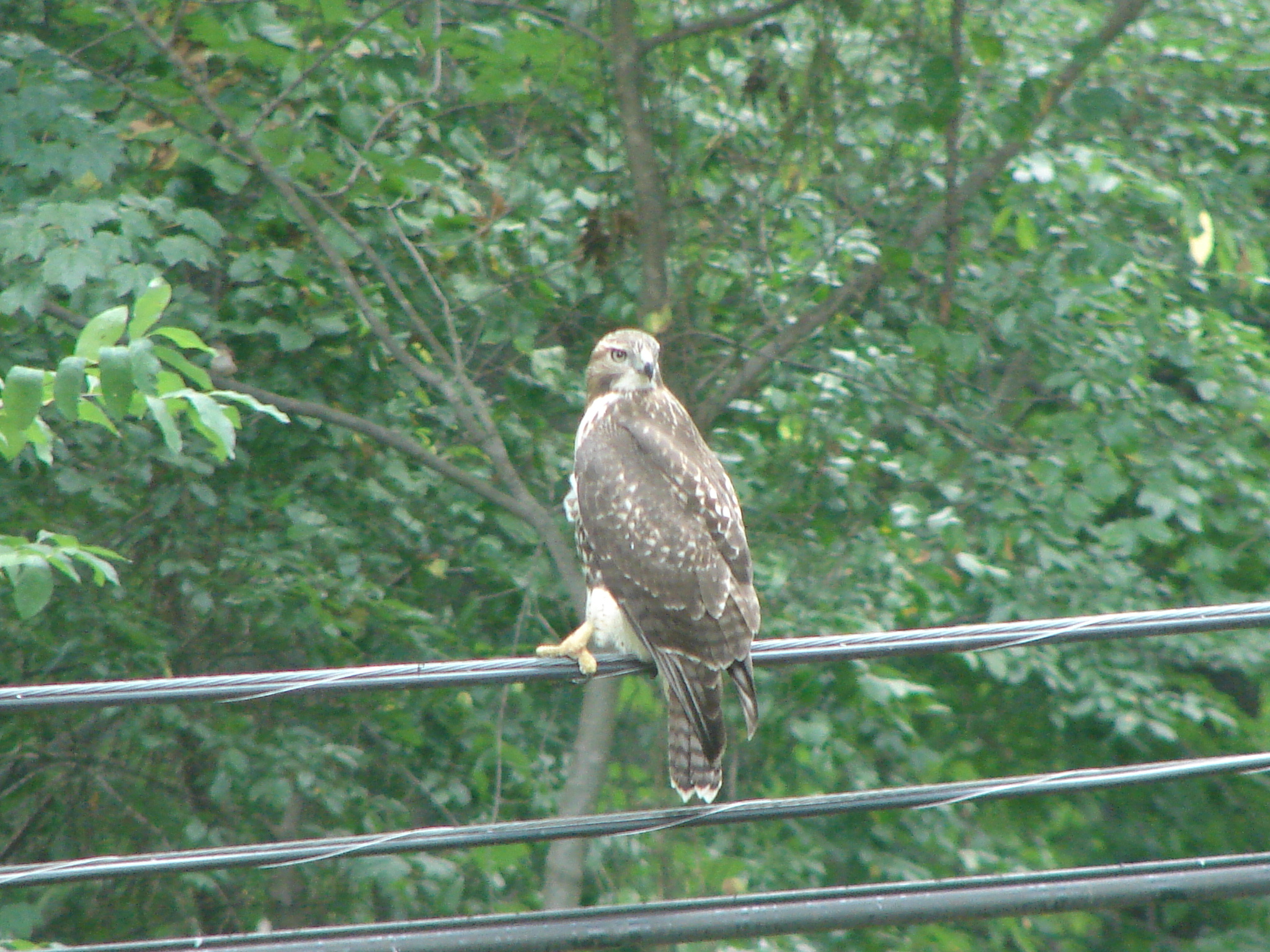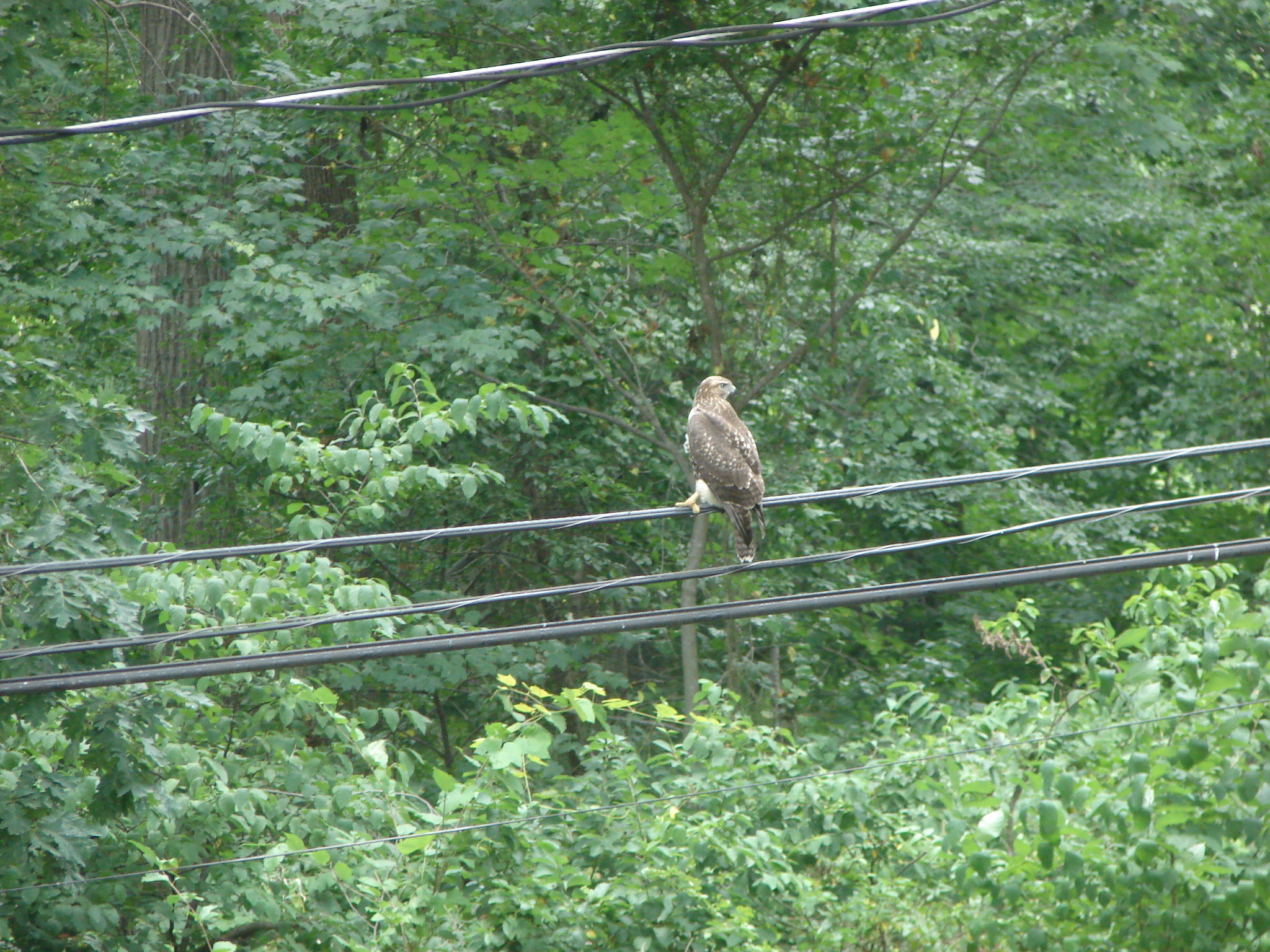A few years ago, in August, my husband got these shots (below) of a hawk perched on the utility lines that stretch along the back of our property line. We weren’t sure if it was a Cooper’s Hawk, a Red-Tailed Hawk or a Red Shouldered Hawk, three of the more common ones in our area.
I sent off an email to the Delaware Valley Raptor Center and got a quick answer back: it’s a juvenile red-tailed hawk. Born in the spring, this guy was probably about six months old.
Birds grow up pretty quickly, and these hawks are no exception. They typically attempt to fly at around three weeks of age and start to catch their own food at six to seven weeks. By four months of age, they are ready to leave the care of their parents and leave the range area.
Immatures attempting to settle for the winter often are harassed from territory to territory by older red-tails, settling only in small, marginal areas. In some cases, such as near urban regions, immatures may be driven to a small pockets of urban vegetation with less tree cover and limited food resources. When a distant adult appear, immature may drop from a prominent perch to a more concealed one. In some cases, hungry immature red-tails have been recorded making attempts at hunting prey beyond their capacities, expending valuable energy, such as healthy adults of larger carnivorans such as coyotes, foxes and badgers and healthy flying passerines. (Wikipedia)
Here’s a detailed drawing of the hawk from WikiCommons:

Source: WikiCommons, Birds and nature in natural colors. v.1.
Chicago :A.W. Mumford, Publisher,1913-1914.
http://biodiversitylibrary.org/item/33165
Hawks eat pretty much anything, kind of like humans. Wikipedia describes hawks as “opportunistic generalists” whose diet is “highly variable.” In our area they eat small mammals such as rodents and ground squirrels, along with insects and frogs. They hunt from a perch, which explains why we so often see them on telephone poles or wires. Their keen eyesight permits them to see prey from far away. In our yard, the birds and squirrels disappear when a hawk is nearby, somehow sensing the danger.




TrackBack URL
https://www.karenfurst.com/blog/red-tailed-hawk-buteo-jamaicensis/trackback/